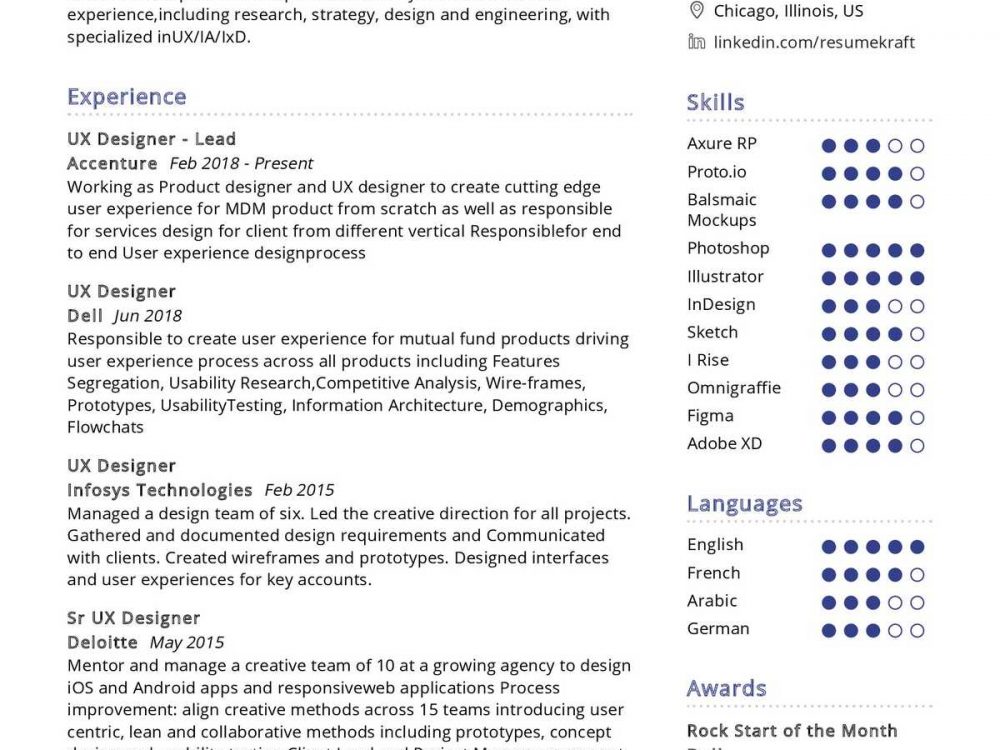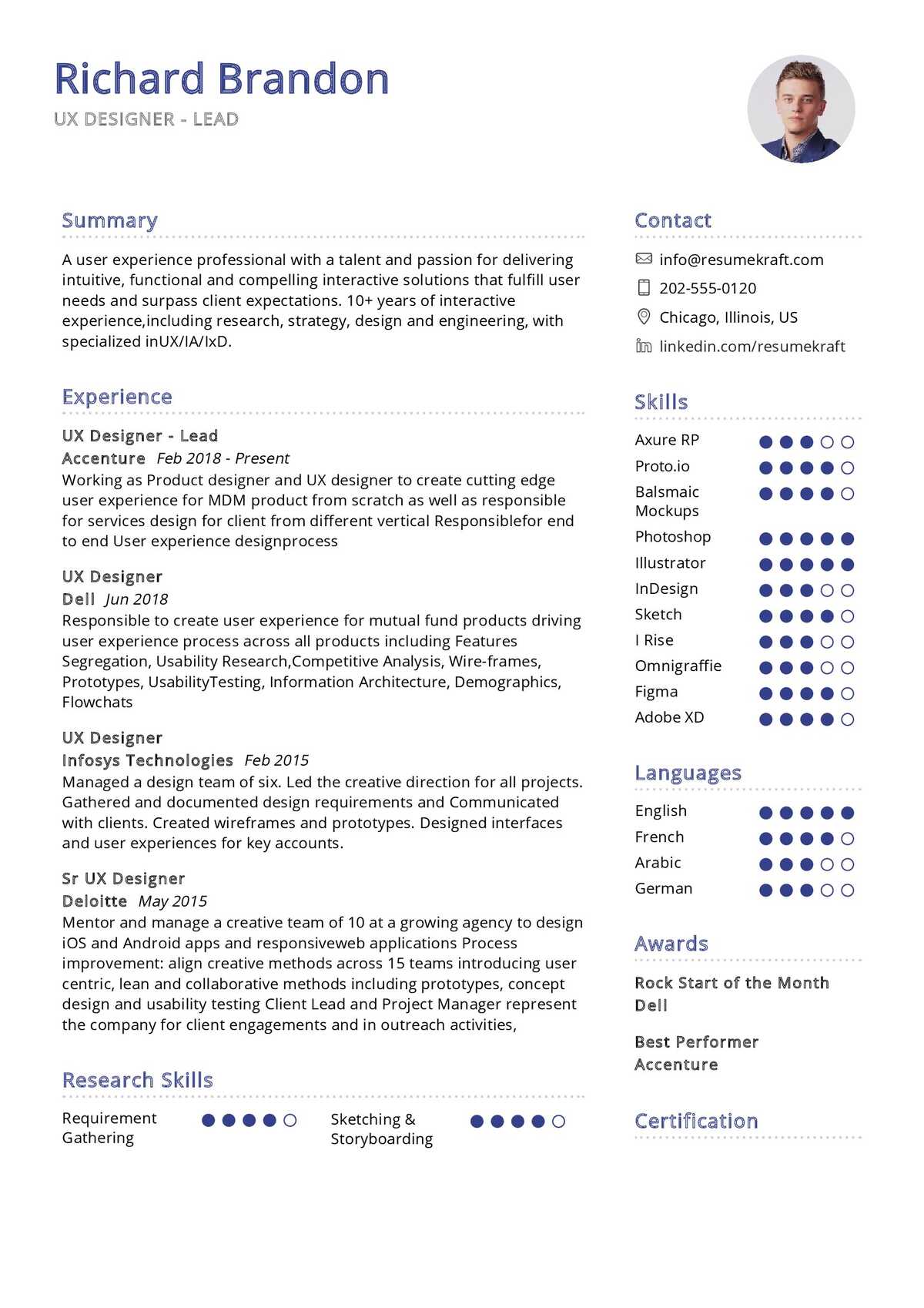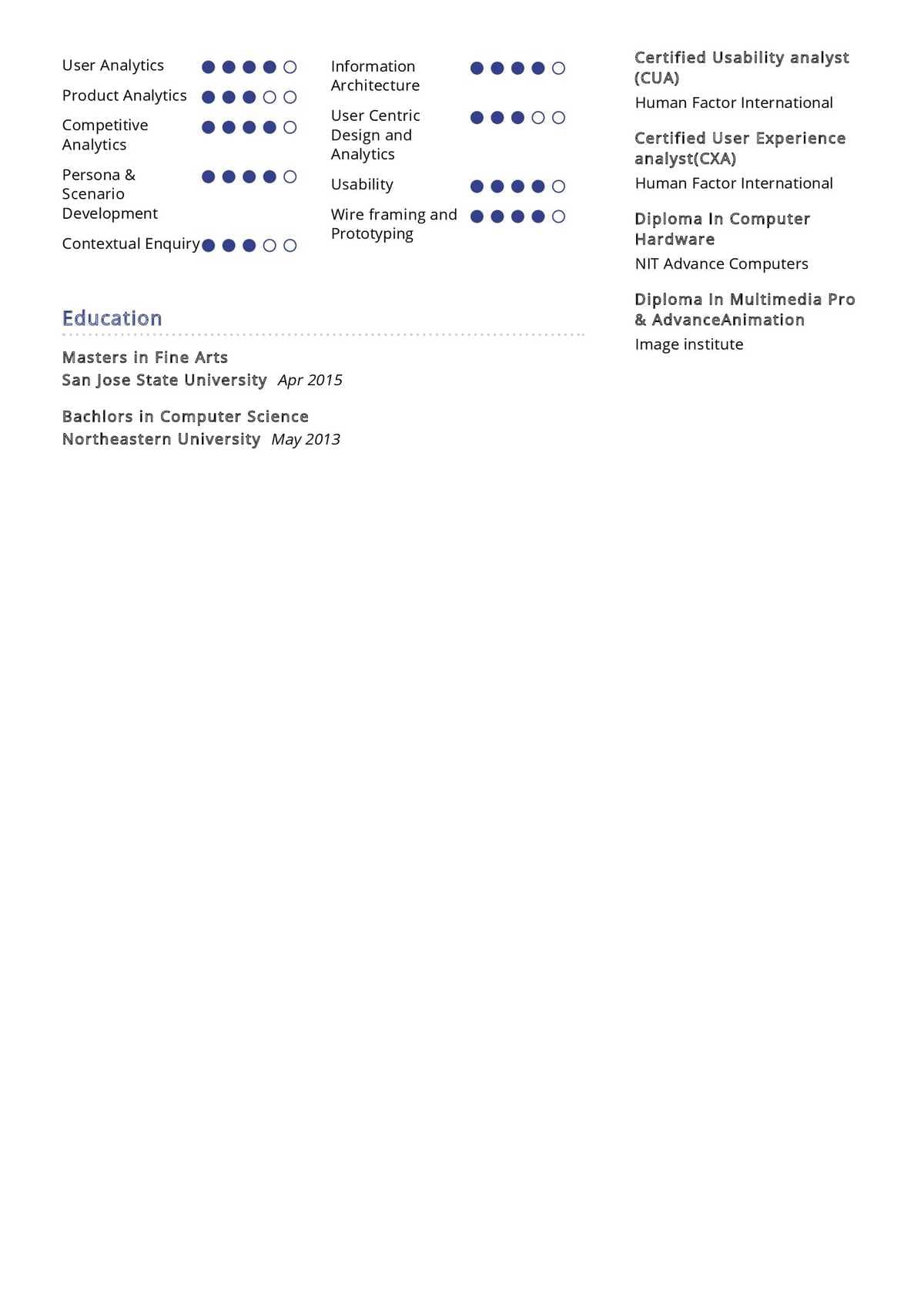Effective Guide on Writing a UX Designer Resume
The perfect UX Designer resume is one that showcases your skills and experience in a way that stands out. Our guide to customizing your resume and cover letter will not only show you how to beat the competition but also help give you an idea of what employers are looking for in an applicant.
If you want to have a shot at landing the UX Designer position of your dreams, then it’s time to start crafting your resume now! Luckily, most applicants overlook these few simple steps in preparation. You’ve got the skill set, now it’s time to show off what you can do.
Make a list of accomplishments and skills you have offered this role. If there are any that stand out as being particularly useful, then emphasize those in your resume. While each role will have different requirements, employers are always looking for something that stands out when recruiting candidates.
UX Designer Job Description:
First and foremost, a UX designer is a person that is exceptionally passionate about creating mind-blowing user experiences. They are passionate about giving the end-users what they really need. They should have an in-depth knowledge of UX Design best practices, ergonomics, human factors, design principles, usability testing, and industry standards/guidelines. A UX designer should be able to design the entire interface of a product or service from top to bottom and everything in between. The best thing about being a UX designer is knowing that you have helped people improve their day-to-day lives by designing an amazing user experience for them.
However, UX Designers spend more time collaborating with developers than other roles within the industry, resulting in more of an interdisciplinary role where they can provide guidance for any aspect of the project.
UX Designer Responsibilities:
- Training users on the system and how to perform a task.
- Building user experiences through the creation of prototypes.
- Developing business strategies for the digital product.
- Adding visual cues to make it easy for users to identify relevant features.
- Integrating and testing features into a digital product or service.
- Managing a project timeline to ensure deadlines are met.
- Working with other UX Designers, Developers, and Technical writers to build a final product.
- Designing and prototyping complex user interfaces.
- Conducting usability tests to find out what users want from your digital product.
- Creating user personas, scenarios, and storyboards that will help to define your overall product or service.
UX Designer Responsibilities: Knowledge of User Experience best practices, ergonomics, human factors, design principles, usability testing, and industry standards/guidelines. Ability to create mockups for wireframes (if not a graphic designer). Create task flows and wireframes of applications according to specifications by project teams. Cross-functional team participation.
10 Must-Have Skills for a UX Designer:
Here is the list of the most popular 10 must-have skill in your resume in order to stand out from the crowd:
User research:
UX designers conduct research to understand and empathize with their users. They conduct interviews, surveys, usability tests, focus groups, etc.
The ability to interview users to get information about their problems, desires, and goals. resource for this.
The design of the user experience for the end-user. Material Design is a great resource for this.
User Experience:
The process by which a user experiences the intended outcome of a product or service in their work. This involves user observation, interviews, surveys, focus groups, usability tests, etc.
The ability to know which design decisions are optimal for users and why they are important. information on this.
UX designers are concerned with the reaction users have when interacting with a product. The means by which a product is used. UX designers come up with the UX designs and user flows for projects, and then produce wireframes and prototypes that convey their ideas Working on a site or application that is important to people can make it easier to gain insight into their needs.
Information architecture:
UX designers are responsible for designing and organizing the layout for a website or app. UX designers create wireframes and sitemaps to arrange content in a way that is easy to navigate by users. Wireframes merely present the page, but they’re not the final layout. These designers also plan and organize navigation points to ensure a user can find their way through an app or website. information on this.
An approach to organizing information that makes it easier for people to find content and use the app without getting lost in the clutter. They may organize information into categories for easier search and retrieval or use color-coding to make clear distinctions between different types of information.
A central part of a UX design process is creating the website’s usability guidelines. These guidelines would be written before any actual work on a site begins, and they would dictate how every user interaction should be accounted for when designing the site.
Interaction design:
UX designers create the interaction flow of a website or app. How the user interacts with information should be easy, intuitive, and useful. UX designers write and create prototypes of application interfaces to test their designs. They must consider how users are going to interact with it and how they will move around within that system throughout their interactions with a site or app.
information on this.
An approach to design that focuses on creating clear user interaction flows within the product or app, in addition to manipulating the interface design in order to better achieve specific goals for users interacting with that product or service. The most important aspect of this is the ability to assess what action needs to be taken in order for an end result other than just ‘good’.
User interface design:
UX designers are involved with creating the layout for applications, websites, or even physical products. They also consider how to make them easy to use, friendly and intuitive. UX designers think about how a user’s wants and needs can be addressed by the design of an app or website. They must also consider how an app or website can present information in a way that is relevant to users as well as attractive. information on this.
Usability testing:
UX designers also test to see how easy a product or website is to use. For example, they might conduct usability testing with people who can’t use the site or applications. They might also conduct usability testing with people who don’t have experience using the product or website. Information on this from Wikipedia
Usability testing is an empirical technique in which a user tries out a system, device, software application, etc.; then has their actions observed or recorded while using that system; and then has these observations analyzed by the researcher (typically using some sort of data analysis tool).
Usability patterns & guidelines:
Making decisions on what features to include and exclude is a major part of UX design. UX designers may research existing products in the same category, as well as mockups or designs that were not adopted. These design elements can be combined into usability patterns, which are elements that have proven to be useful in certain situations. information on this. UX designers categorize patterns based on functionality, mental models, categories of interaction, and so forth. The result is a library of templates for user interface components or screens that are frequently used in projects.
Rapid prototyping tools & techniques:
Prototyping tools are used to design a project in a short amount of time. They can take the form of wireframes, rapid prototypes, and static prototypes. A prototype tends to have a low level of functionality and is usually made with two or three screens on one page. information on this.
A technique for quickly creating mockups (2D or 3D) that are used as an interactive preview of parts of an app or website before it is finalized and released for public use.
Communication:
UX designers write documentation to inform the people developing the product or service and to help users use it. They may also review user tests to identify areas of improvement.
Information architecture:
A website is likely to have several different types of content, each one with a different role and purpose. UX designers define them in order to determine how they should be organized on the site for maximum usability.
Information architecture:
A wireframe is a visual guide that represents key content and functionality within a website or app, reduced down into simple boxes so that developers can build websites without being distracted by design elements that are not important at this stage of the process. Wireframes are “low-fidelity”.
Project management:
The roles of a UX designer can sometimes overlap with that of a project manager.
Usability testing:
UX designers consider usability issues such as how to present the most information in the shortest time, the most effective way to communicate with the user, and how users interpret their work. An important part of this is testing.
Information architecture:
Typical user experience (UX) requirements for an app or website include main points of interest; navigation options; and content. The UX designer plans for these elements through information architecture (IA). IA is a declarative specification for creating websites and apps, which describes relationships between content, controls, actions, and data.
Team management:
To manage a design team effectively, UX designers need to ensure that designs are always maintained in line with user needs. This means the work should be done by a small number of people who do exactly what is required to master the users’ perception of the product.
The role of a UX designer can vary among organizations. In general, UX designers are responsible for defining features and making sure they meet business needs. They may be involved in areas like user research, information architecture, and wireframing with developers to produce a usable product or service that works according to audience expectations and requirements.
Final Conclusion:
The above article helps you to understand at a deeper level and also helps you to understand some of the best Job opportunities for UX Designer. Also, it will help you to understand in a better way the responsibilities of a UX Designer. Then, it will give you some ideas on how to get a better professional experience for yourself.
Check our resume sample and use our free resume builder to edit and download in PDF file format. All the best!!



